The Tent
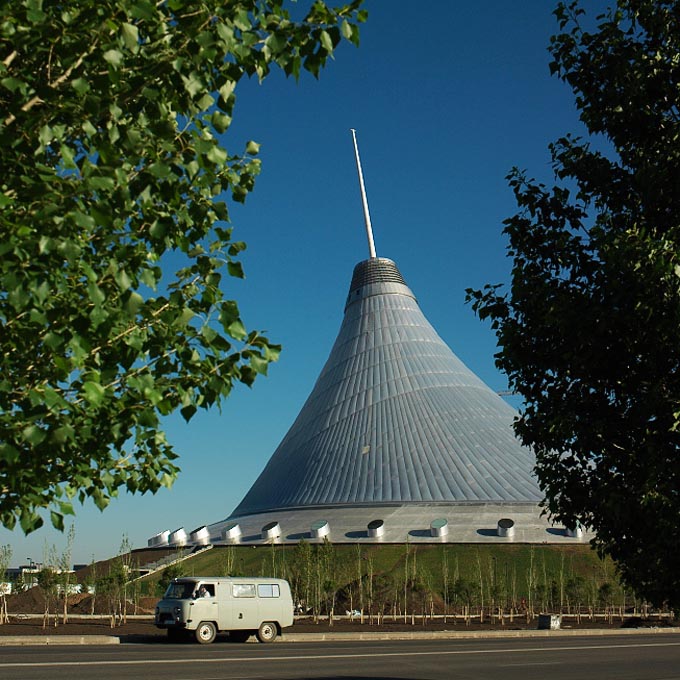 [Image: Photograph by Will Webster].
[Image: Photograph by Will Webster].Photographer Will Webster got in touch the other week with a large batch of photos taken behind the scenes of the "world's largest tent," designed by Norman Foster, which opened this week in Astana, Kazakhstan.
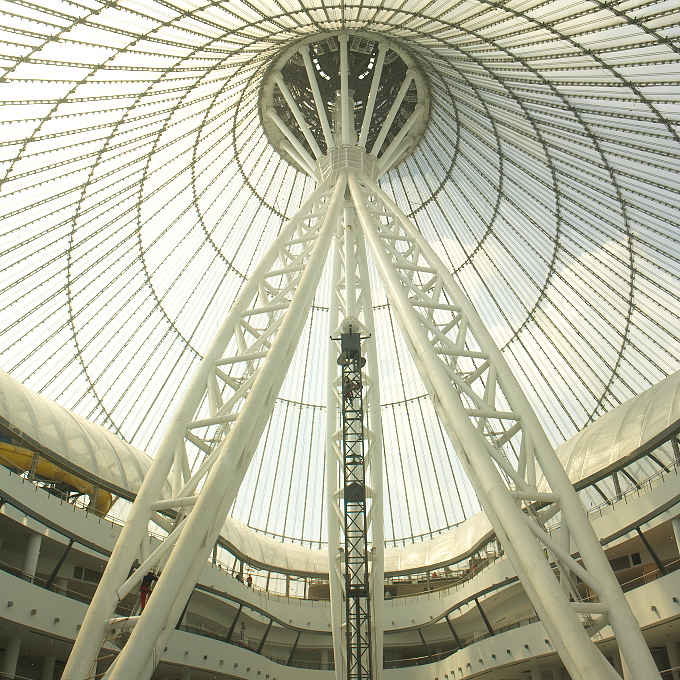
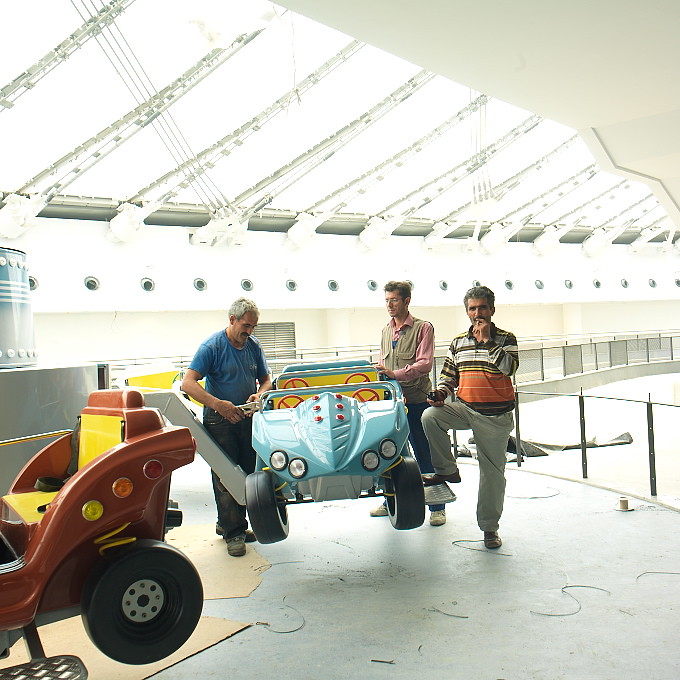
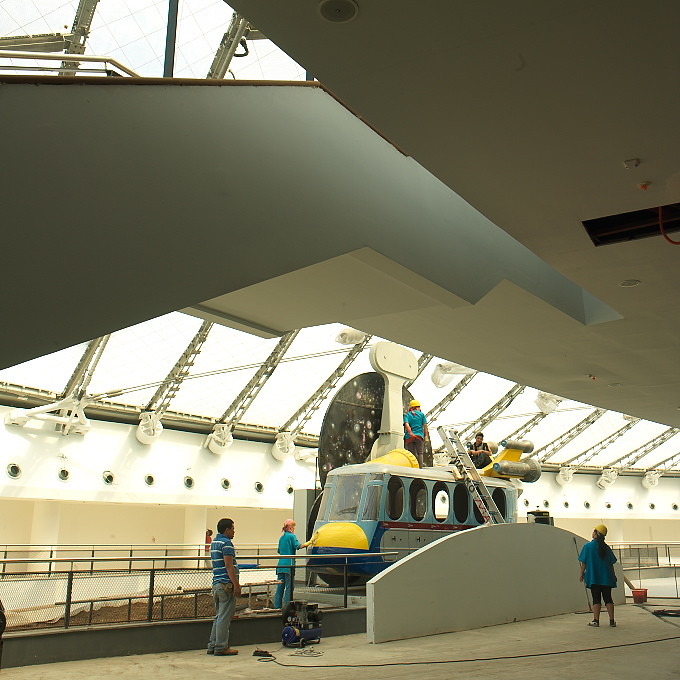 [Images: Photos by Will Webster].
[Images: Photos by Will Webster].From the Guardian:
- The Khan Shatyr, a 100,000 sq metre complex designed by Lord Foster, holds a city within a city, with shops and restaurants, cinemas, water park, botanical garden, mini-golf course, and a monorail. The aim of the tent is to provide escape to a people subjected to some of the harshest climes of Central Asia's vast steppe. Temperatures in Astana, in northern Kazakhstan, regularly dip well below -30C in winter.
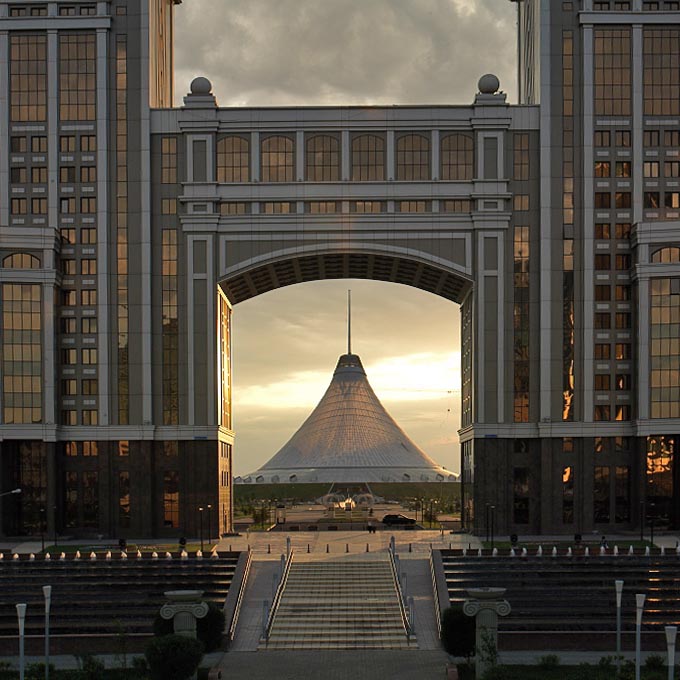 [Image: Photograph by Will Webster].
[Image: Photograph by Will Webster].But the building was assembled by everyday workers, amidst the mundane landscapes of this growing, purpose-built capital city, watched by Astana's own residents.
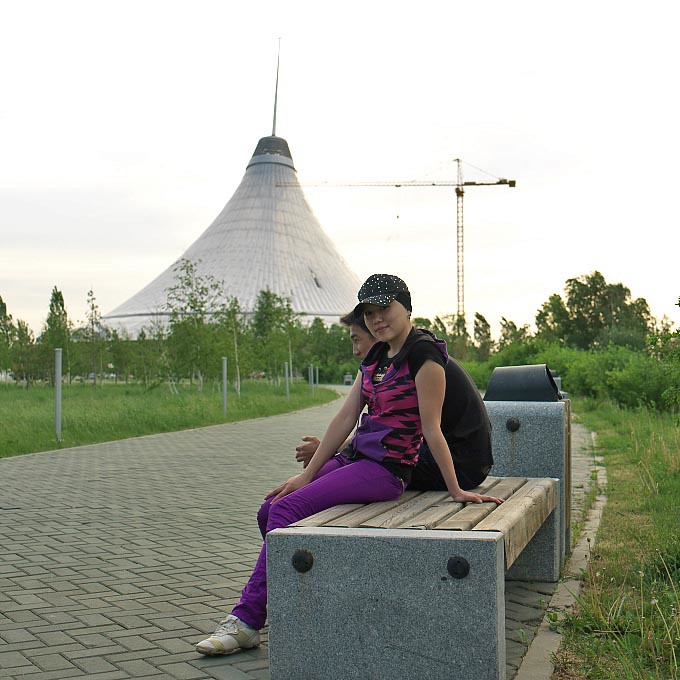

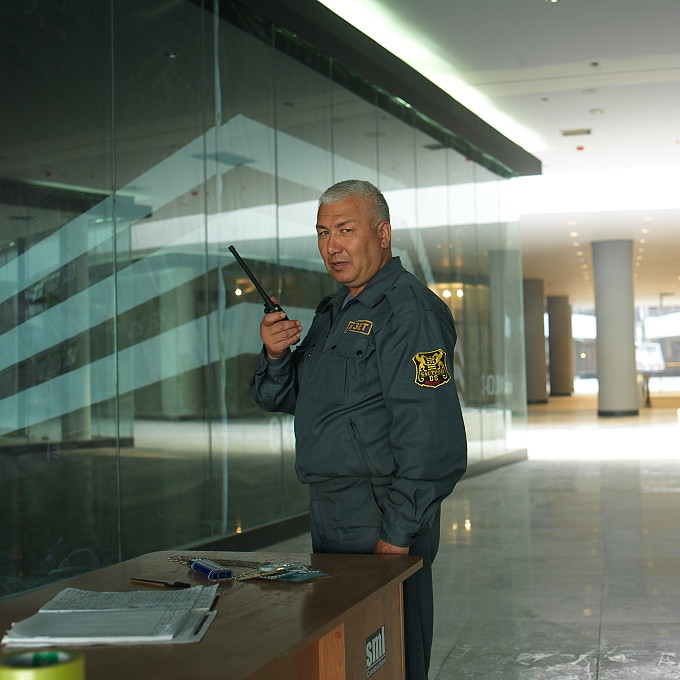 [Images: Photos by Will Webster].
[Images: Photos by Will Webster].Webster's photos—a selection of which you see reproduced here—offer a welcome, unpolished, backstage view of the building as its construction approached an end.
 [Image: Photo by Will Webster].
[Image: Photo by Will Webster].Future fun rides sit patiently wrapped in plastic as men in mountaineering gear fix cabled meshes and high-tension wires high inside the volcanic space.
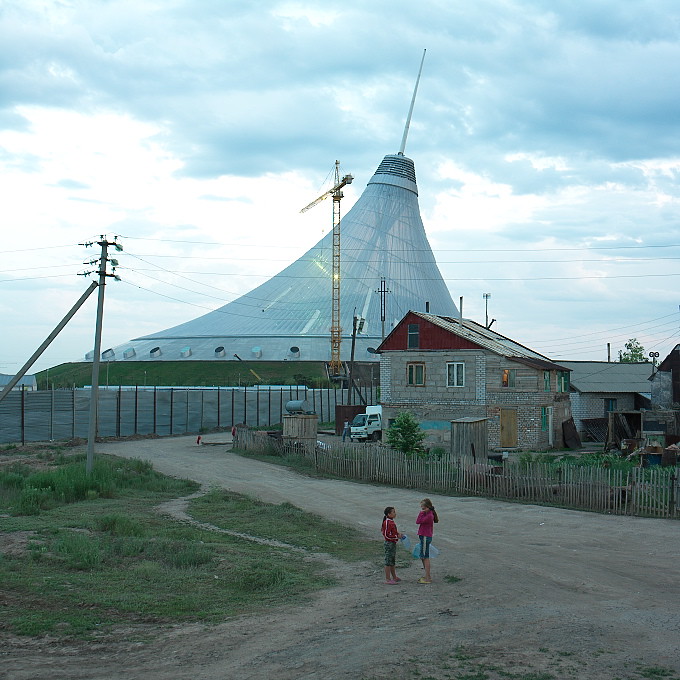
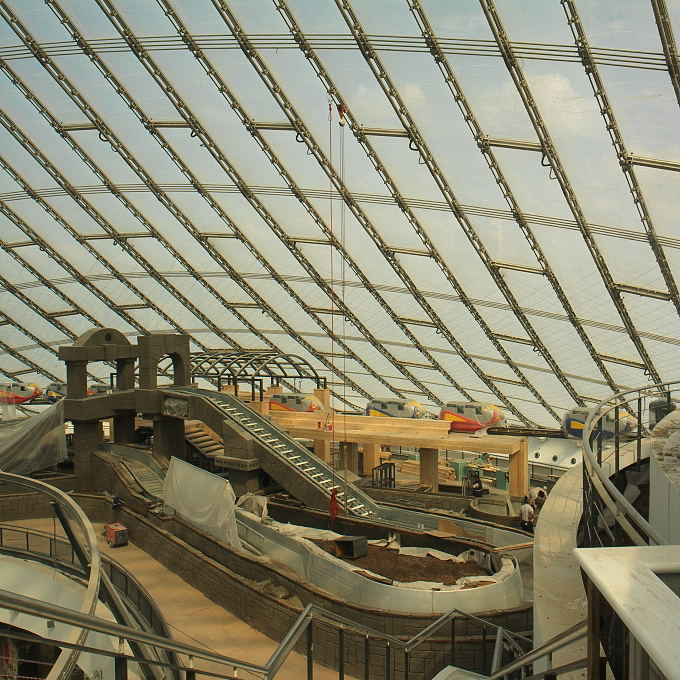
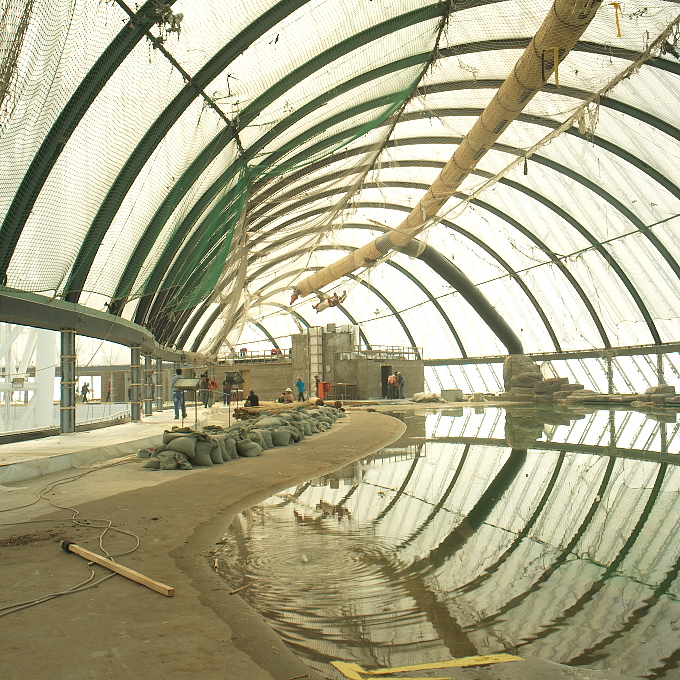
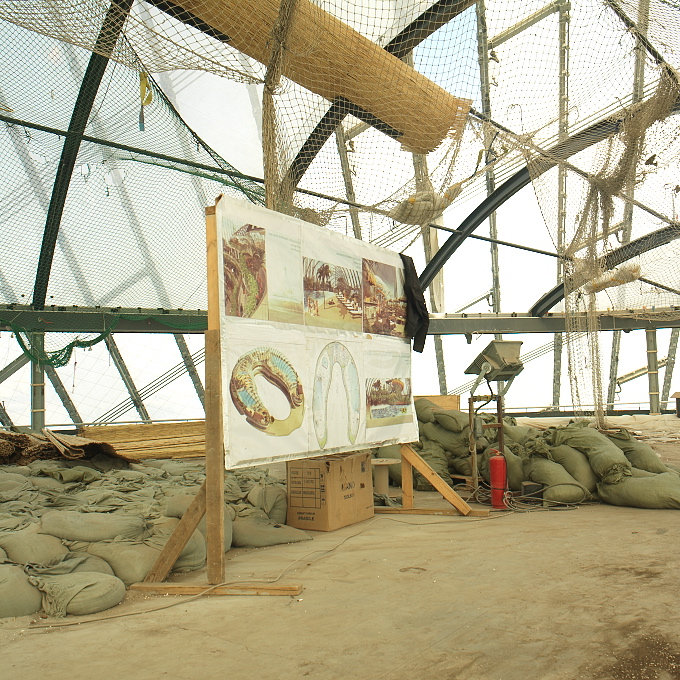
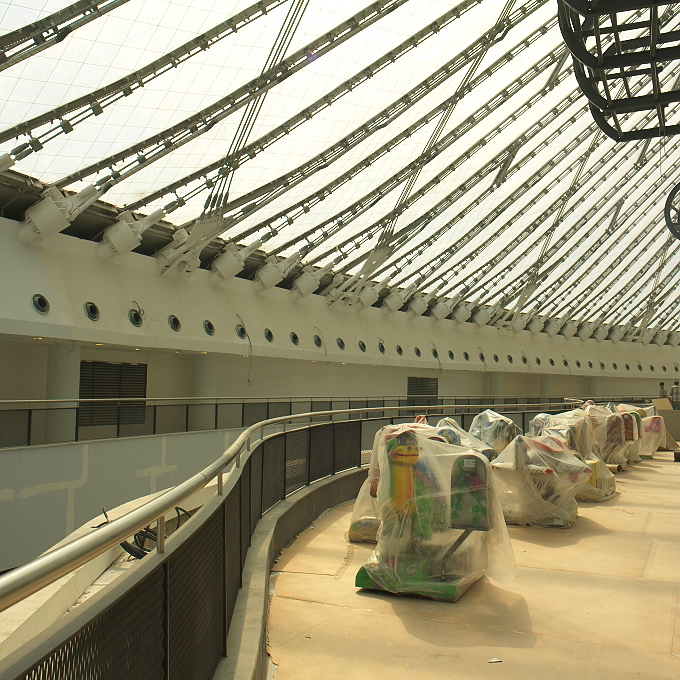 [Images: All photographs by Will Webster].
[Images: All photographs by Will Webster].All told, the building cuts an unlikely profile in its only semi-urban context. At dusk, through Webster's lens, it looks less like a structure parachuted in from the future, than the shell of an old expo whose excitement has long since faded.
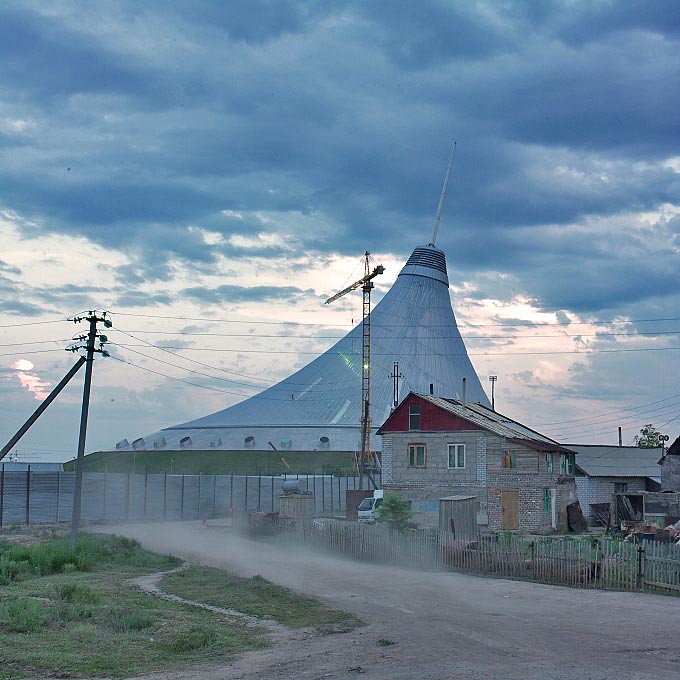 [Image: Photo by Will Webster].
[Image: Photo by Will Webster].(PS: The abandoned water towers of Webster's Soviet Farming Project series would also be great to explore at more length).





Comments are moderated.
If it's not spam, it will appear here shortly!
I saw this great film Capital(trailer below) at Full Frame Documentary Film Festival. The film is about the building of Astana and has a bit about this tent. Foster also did a huge steel and glass pyramid in the city.
http://capitalfilm.net/trailer_hi.html
Alex R
nice post.
remember that norman foster also want attention to what pioneered hyperbole architecture, namely the tower by vladimir shukhov.
please read this guardian-article about the threat of the shukhov-tower
http://www.guardian.co.uk/world/2010/apr/15/radio-tower-campaign-russia-foster
The silhouette reminds me a bit of the Basilica of Guadaluape in Mexico City.
Photo
Wow - Dejafu, thanks! Didn't know that building.
I was going to say that -30C isn't that bad, that it's usually colder than that when I take my road trip into Minnesota in January, but they do have the Mall of America and the Skyway system.
Presumably there is some basic equation that could be extracted that takes into account local average winter temperature and local gross economic production and yields the volume of their climate controlled complex.
Post a Comment